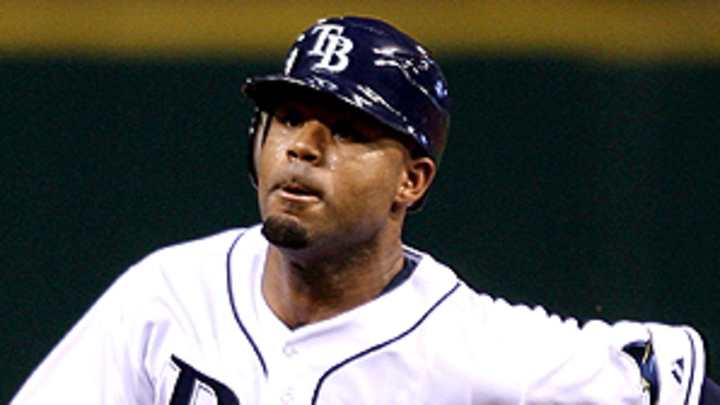Rays' so-so road performance is encouraging news for Phillies


If you're a Phillies fan, what gets you going right now is the potential for your team to win the World Series without ever going back on the road. By winning one game in Tampa, the Phillies took home-field advantage back for the remainder of the series. Although home-field advantage in baseball is generally small -- and certainly not worth using as an incentive for the All-Star Game -- the Rays were a much different team home than they were away: 57-24 with a +92 run differential at Tropicana Dome; 40-41 and +11 everywhere else.
As the Series shifts to Citizens Bank Park tonight, with the Rays needing at least one road win to send the series back to Florida, it's worth looking at that split in the Rays' performance to see what changed for them away from St. Petersburg. Yes, they had a run differential a full run per game better at home, but what elements went into that gap?
The biggest thing that jumps out is that the team had a massive BABIP split in its favor both home and on the road. At home, the Rays hit for a batting average on balls in play of .317. On the road, that mark was .287. For their pitchers, though, the home mark was .264, and the road mark .295. While these splits were the proximate cause of the Rays' homer/road divergence -- almost the entire difference in their batting and opposing batting lines is the 30 points of BABIP -- there's no clear indication of why that would be the case. Nor is BABIP for pitchers is primarily determined by G/F rates, line drive rates and team defense, only the last of which ever varies substantially by location. For hitters, BABIP is a skill, one that is a key determinant of overall value. While, again, a big split could just be a home-park effect, the fact that the overall BABIPs for home and road are close indicate that the dome isn't the issue. The Rays' 2008 splits are strange, and at the same time, render the discussion of their road record a pretty simple one: the balls fell in at home for their hitters and didn't for their pitchers.
There are some other minor drivers worth mentioning. The Rays hitters were much less disciplined on the road, walking in 8.6 percent of their plate appearances and posting a K/BB of 2.3. At home: walks in 11.9 percent of PA and a K/BB of 1.9. They ran less on the road, which was probably a function of the missing baserunners as fewer hits were falling in and fewer walks were taken. On the road, their pitchers were not very effective -- in addition to the BABIP jump, which of course bumps singles, doubles and triples higher, the Rays allowed more than 30 percent more homers on the road.
Setting aside the BABIP split as noise, focus on the plate discipline and the homers. For a young team, the Rays produce a ton of good at-bats, but it does seem that they may have been a bit more anxious on the road. They'll have to control that trait, especially in Game 3 against Jamie Moyer, who exploits that kind of impatience. On the mound, Matt Garza has been one of the Rays' best pitchers at keeping the ball in the park, and that will have to continue tonight. The Phillies' offense has been underwhelming, scoring on two home runs, an infield out and an error. Some longballs for a team that hit them by the bushel would go a long way. Hit them early, because the Rays and their bullpen have shown that they will not let the Phillies hit them late, Eric Bruntlett notwithstanding.
